Spring Has Come [1]
By Oliver Wendell Holmes
Annotations by Celia Hawley
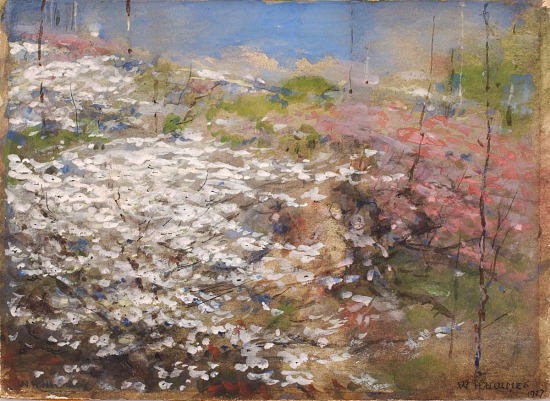
The sunbeams, lost for half a year,
Slant through my pane their morning rays;
For dry Northwesters cold and clear,
The East blows in its thin blue haze.
And first the snowdrop’s bells are seen,
Then close against the sheltering wall
The tulip’s horn of dusky green,
The peony’s dark unfolding hall.
The golden-chaliced crocus burns; [2]
The long narcissus-blades appear;
The cone-beaked hyacinth returns,
And lights her blue-flamed chandelier.
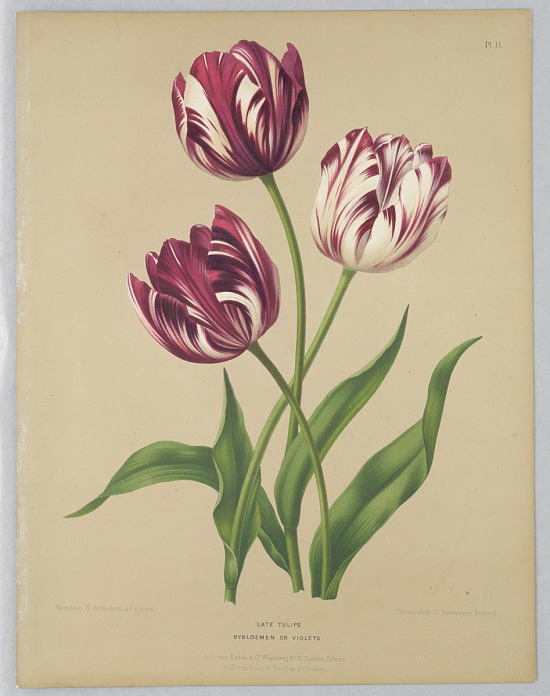
The willow’s whistling lashes, wrung
By the wild winds of gusty March,
With sallow leaflets lightly strung, [3]
Are swaying by the tufted larch.
The elms have robed their slender spray
With full-blown flower and embryo leaf;
Wide o’er the clasping arch of day
Soars like a cloud their hoary chief. [4]
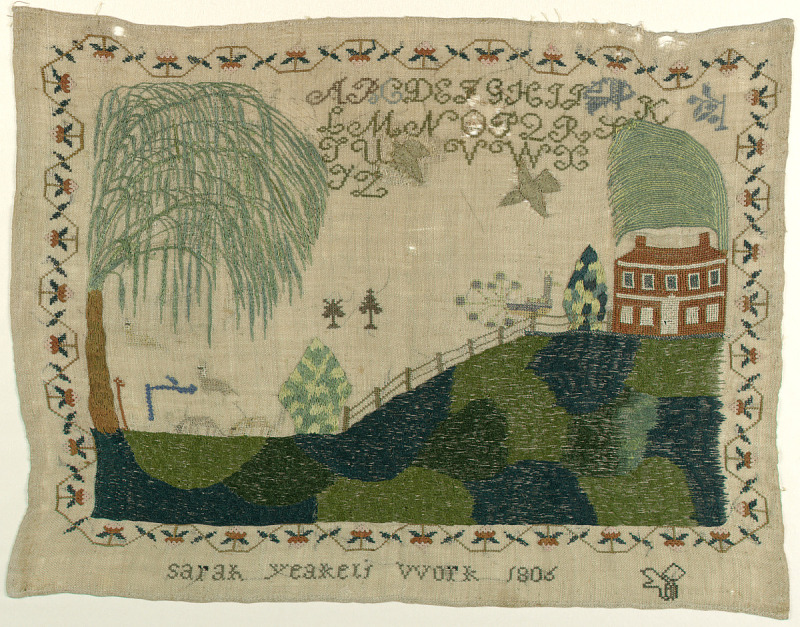
–See the proud tulip’s flaunting cup,
That flames in glory for an hour, —
Behold it withering,–then look up,–
How meek the forest-monarch’s flower! — [5]
When wake the violets, Winter dies;
When sprout the elm-buds, Spring is near;
When lilacs blossom, Summer cries,
“Bud, little roses! Spring is here!”
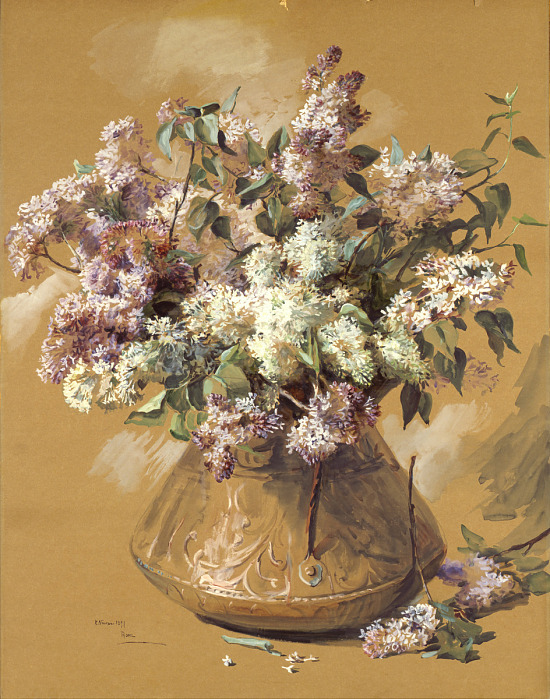
The windows blush with fresh bouquets,
Cut with the May-dew on their lips
The radish all its bloom displays,
Pink as Aurora’s finger-tips. [6]
Nor less the flood of light that showers
On beauty’s changed corolla-shades,– [7]
The walks are gay as bridal bowers
With rows of many-petalled maids.
The scarlet shell-fish click and clash
In the blue barrow where they slide; [8]
The horseman, proud of streak and splash,
Creeps homeward from his morning ride.
Here comes the dealer’s awkward string,
With neck in rope and tail in knot,–
Rough colts, with careless country-swing,
In lazy walk or slouching trot.–
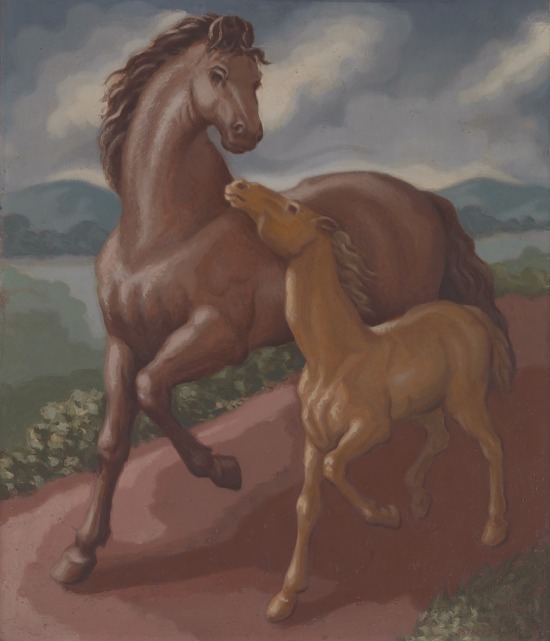
Wild filly from the mountain-side,
Doomed to the close and chafing thills, [9]
Lend me thy long, untiring stride
To seek with thee the Western hills!
I hear the whispering voice of Spring,
The thrush’s trill, the cat-bird’s cry,
Like some poor bird with prisoned wing
That sits and sings, but longs to fly.
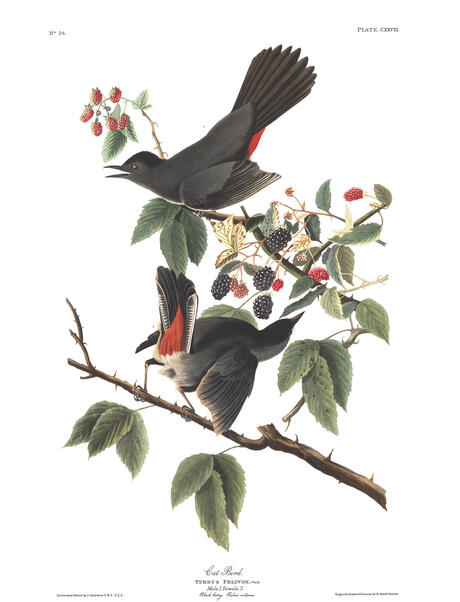
Oh for one spot of living green,–
One little spot where leaves can grow,–
To love unblamed, to walk unseen,
To dream above, to sleep below!
Spring Has come by Oliver Wendell HOlmes, 1858
[1] See Helen Keller’s letter of 1891 to Dr. Holmes regarding her reaction to this poem, included in this anthology. She tells him, in part: “I am not blind any longer, for I see with your eyes and hear with your ears.”
[2] golden-chaliced The golden petals of the flower that appear to hold or contain it
[3] sallow Although it can also mean an unhealthy or yellow complexion, Holmes uses “sallow” in its definition of willow tree, one that can be low-growing or shrubby. (All definitions courtesy Merriam-Webster)
[4] hoary Gray or white as if with age
[5] monarch The one who holds primary position or power
[6] Aurora The Roman goddess of dawn
[7] corolla-shades The inner whorl of petals in a flower, whose color can alter with the light
[8] barrow Wheelbarrow. Seasonal seafood was transported from Boston Harbor to nearby towns via horse-drawn carts.
[9] thills Shafts used to attach a cart or carriage to the animal drawing it
Contexts
Biography of Oliver Wendell Holmes, Encyclopedia Britannica online.
The Rarely Beautiful Life of Oliver Wendell Holmes Jr. Holmes grew up in New England at a time when that region of America held cultural dominance in the country. He lived an unusually interesting and privileged life.
A Brief Guide to the Fireside Poets – A group known for their conventional forms and longer narrative poems.
The first of Helen Keller’s letters to Dr. Holmes, written soon after a visit to him, which he published in his volume Over the Teacups. Courtesy the American Foundation for the Blind.
Resources for Further Study
- William Henry Holmes, painter and scientist.
- Frank Stamato, The Smithsonian American Art Museum
Pedagogy
- Holmes uses many metaphors, or implied comparisons, in his poem. Name at least three that you notice, due to their vivid language, in the first half of the poem.
- The poet also employs similes, direct comparisons using like and as, as well as personification. What effect do these rhetorical devices have on the visual images created by the poem?
- After many stanzas devoted to flowers and their imagery, Holmes brings in other signs of spring as they occurred in 1858. What are those additional signs of the seasons he mentions?
- How would you characterize the vocabulary Holmes uses in Spring Has Come? And his powers of observation?
- The final stanza is less specific than the ones it follows; what is the feeling that is yearned for in it?
Contemporary Connections
Poems for Spring: a selection of poems that welcome the season.
10 Outside-the-Box Native Plants – the New England Wildflower Society’s Guide